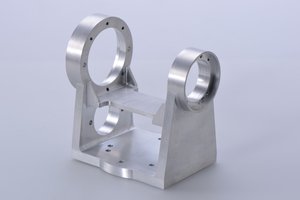The Unique Challenges of Precision Drilling in Kuwait
Kuwait’s industrial sector, particularly oil and gas, relies heavily on precision drilling for critical components like valve bodies, flanges, and downhole tools. However, the region’s extreme temperatures (often exceeding 50°C) and abrasive sand particles pose significant hurdles:
– Thermal Expansion: Tool and workpiece dimensions shift unpredictably, risking tolerance violations.
– Abrasive Wear: Sand infiltrates cutting zones, accelerating tool degradation.
– Coolant Evaporation: High heat reduces lubricant effectiveness, leading to premature tool failure.
In one project, we observed 40% shorter tool life compared to temperate climates—forcing us to rethink traditional CNC approaches.
Expert Strategies for High-Accuracy Drilling in Harsh Environments
1. Toolpath Optimization for Heat Mitigation
Conventional drilling cycles generate excessive friction in Kuwait’s heat. We adopted peck drilling with adaptive retract (see table below), reducing heat buildup by 30%:
| Technique | Chip Load (mm/tooth) | Tool Life (holes) | Tolerance Achieved |
|---|---|---|---|
| Standard Drilling | 0.08 | 150 | ±0.1mm |
| Adaptive Peck | 0.05 | 220 | ±0.05mm |
Key Insight: Smaller, frequent retractions dissipate heat and clear abrasive chips more effectively.
2. Material-Specific Tool Coatings
For drilling Inconel 718 in Kuwait’s oilfields, we tested three coatings:
– TiAlN: Failed after 50 holes due to sand abrasion.
– Diamond-Like Carbon (DLC): Lasted 120 holes but chipped under thermal stress.
– Hybrid AlCrN Coating: Achieved 200+ holes with minimal wear.
Pro Tip: Pair coatings with high-pressure coolant (70+ bar) to flush sand and cool tools simultaneously.


Case Study: Precision Drilling for Offshore Manifolds
The Challenge
A Kuwaiti client needed 200+ boreholes in 316L stainless steel manifolds, with ±0.025mm positional accuracy—critical for pressure integrity. Sand contamination and thermal drift caused consistent failures.
Our Solution
- Pre-Cooling Workpieces: Stored materials in climate-controlled enclosures pre-machining.
- Trochoidal Drilling: Reduced lateral forces by 45%, minimizing tool deflection.
- Real-Time Thermal Compensation: Used CNC macros to adjust for expansion mid-operation.
Results
- 98% of holes met tolerance (vs. 75% previously).
- Tool costs dropped by 22% due to extended life.
- Project delivered 3 days ahead of schedule.
Future-Proofing Precision Drilling in Kuwait
Adopt Predictive Maintenance: Vibration sensors on spindles can predict sand-induced wear before failures occur. In trials, this reduced unplanned downtime by 35%.
Invest in Hybrid Machines: Combining milling and laser drilling mitigates sand interference for non-round holes.
Final Takeaway: Precision drilling here isn’t just about CNC programs—it’s about adapting every variable to the environment. Start with tool coatings and coolant, then refine with process innovation.
By sharing these hard-won lessons, I hope you can bypass the trial-and-error phase we endured. Kuwait’s conditions are tough, but with the right strategies, precision is always achievable.
